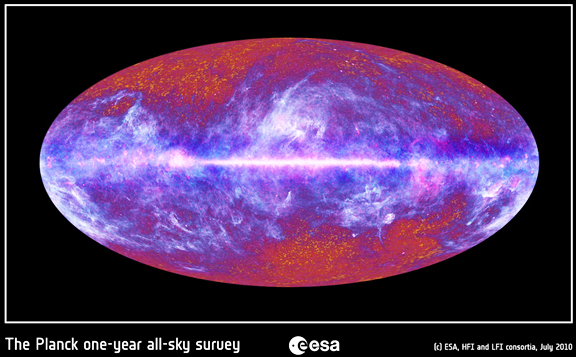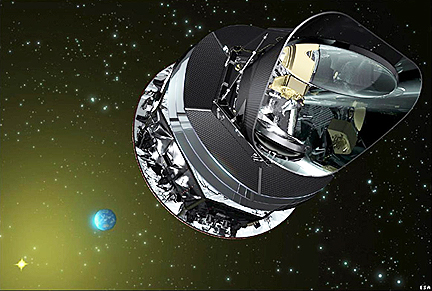
From the closest portions of the Milky Way to the furthest reaches of space and time, the new all-sky Planck image is an extraordinary treasure chest of new data for astronomers. The main disc of our Galaxy runs across the centre of the image. Immediately striking are the streamers of cold dust reaching above and below the Milky Way. This galactic web is where new stars are being formed, and Planck has found many locations where individual stars are edging toward birth or just beginning their cycle of development. Less spectacular, but perhaps more intriguing, is the mottled backdrop at the top and bottom. This is the ‘cosmic microwave background radiation’ (CMBR). It is the oldest light in the Universe, the remains of the fireball out of which our Universe sprang into existence 13.7 billion years ago.

Planck
The CMBR covers the entire sky, but most of it is hidden in this image by the Milky Way’s emission, which must be digitally removed from the final data in order to see the microwave background in its entirety. When this work is completed, Planck will show us the most precise picture of the microwave background ever obtained. The big question will be whether the data will reveal the cosmic signature of the primordial period called inflation. This era is postulated to have taken place just after the Big Bang and resulted in the Universe expanding enormously in size over an extremely short period.
Planck continues to map the Universe. By the end of its mission in 2012, it will have completed four all-sky scans. The first full data release of the CMBR is planned for 2012. Before then, the catalogue containing individual objects in our Galaxy and whole distant galaxies will be released in January 2011.

